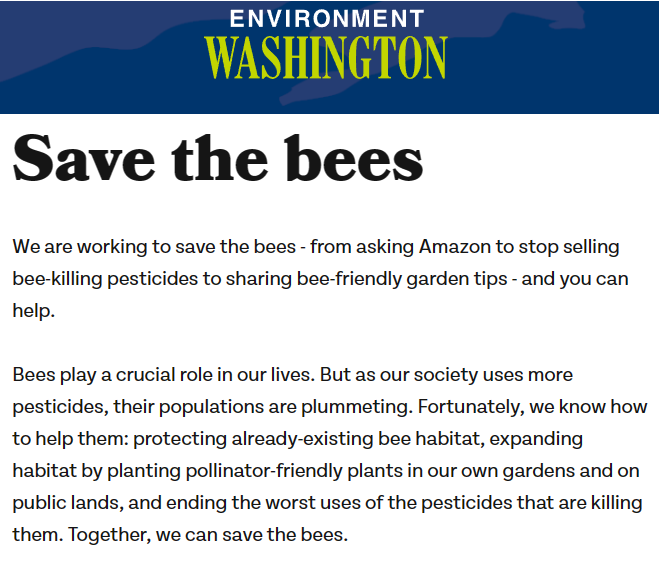It turns out that, as we have been saying for years, honeybee populations aren’t declining, but are actually increasing.
A recent article in Vox notes that the talk of honeybees disappearing was “greatly exaggerated.” Admitting that his previous stories predicting the collapse of honeybee populations hadn’t aged well, the reporter explained that a recent agricultural census found that the 31 percent increase in honeybees since 2007 is “a larger increase than any other domesticated animals.”
Another story in the Washington Post noted – with surprise – that “America’s honeybee population has rocketed to an all-time high.”
The Vox article goes on to note that all is not perfect for honeybees. Honeybee colonies are still dying at a high percentage, “chiefly due to infestations of Varroa mites and the viruses associated with them.” Although a higher percentage of hives die each year than was typical in the late 1900s, beekeepers are replacing them more quickly than they die.
It is good to see environmental reporting that a) highlights good news, and b) contradicts a population environmental scare.
None of this should have come as a surprise, however. I have been pointing out that honeybee populations are not declining – and have actually been increasing – since at least 2014.
That year, I wrote, “Total honeybee populations in the United States are actually increasing. … Beekeepers are responding to CCD [colony collapse disorder] by increasing breeding. For example, one of my two hives died over the winter, but I will have four hives this year because I am buying newly bred bees and splitting one of my hives into two. Others are doing the same, which is actually increasing the number of pollinators.”
Despite the data, some environmental groups continued to claim honeybee populations were collapsing and that pesticides were the cause.
In 2016, Environment Washington claimed that over the previous two years, “there has been a 30-40% decline in bees.” This was false. About a third of hives died in a given year, but those hives were replaced so there was no decline in the number of honeybee colonies.
They blamed this nonexistent decline on pesticides. This is also false. As we pointed out at the time, the lowest mortality rates are among commercial beekeepers, whose hives are most exposed to agricultural pesticides.
As the Vox piece notes, the primary cause of increased mortality among honeybees is an invasive mite called the Varroa mite with the fitting scientific name of Varroa destructor. Every year, beekeepers participate in a survey of hive mortality and identify the suspected cause of mortality.
The most recent report notes that “The most prominent cause of colony death reported by beekeepers over the winter 2022-23 was “varroa” (Varroa destructor, and its associated viruses)…” Other causes include “adverse weather,” “starvation,” and “queen issues.” Pesticides were behind all these other factors.
Even after we corrected them, Environment Washington continued to claim that honeybee populations were declining and that it was due to pesticides for years.
 Indeed, they still have a campaign to “save the bees” on their web page. The page claims bee “populations are plummeting” and that the cause is pesticides.
Indeed, they still have a campaign to “save the bees” on their web page. The page claims bee “populations are plummeting” and that the cause is pesticides.
To be fair, they don’t say honeybees, but “bees.” However, virtually all of the photos they include are of honeybees. The news articles they link to also mention honeybees and have pictures of honeybees. And they claim, “75% of all food crops and a full 90% of all wild flowering plants rely on bees for pollination,” which is a reference to honeybees since wild bees rarely pollinate crops.
Now that the data show these claims are false, will Environment Washington finally admit they are wrong? Don’t count on it.
It is also worth noting that Environment Washington is trying to ban neonicotinoids, which are less dangerous to bees than the pesticides they replaced. During the 2024 legislative session, a bill limiting the use of neonicotinoids, claiming it cause “bee colony collapse,” was adopted. It isn’t as bad as previous versions of the bill, but it is still based on a false claim.
The fact is that beekeepers, and the orchardists who hire them, combined to make sure honeybee populations remained strong even as new threats like the varroa mite appeared. Commercial beekeepers have a financial incentive to ensure they have enough bees to get paid for pollination services. Orchardists who pay beekeepers also have a strong financial incentive to ensure they don’t use pesticides when it may hurt the bees they rely on to create their crop.
Those who claim that agricultural pesticides are killing the bees are wrong on the data and simply don’t understand the incentives.
There are things to be concerned about. Native bee and insect populations appear to be declining. Unlike honeybees, which have the benefit of market foces on their side, native bees are impacted by loss of habitat and other pressures. This is a real concern and private landowners should be supported, not punished, to help create the habitat and conditions to protect their populations.
Beekeepers still face many challenges in keeping their hives alive. But it will be beekeepers and the orchardists and others in the agricultural sector who will find the solutions, not politicians or environmental activists.




